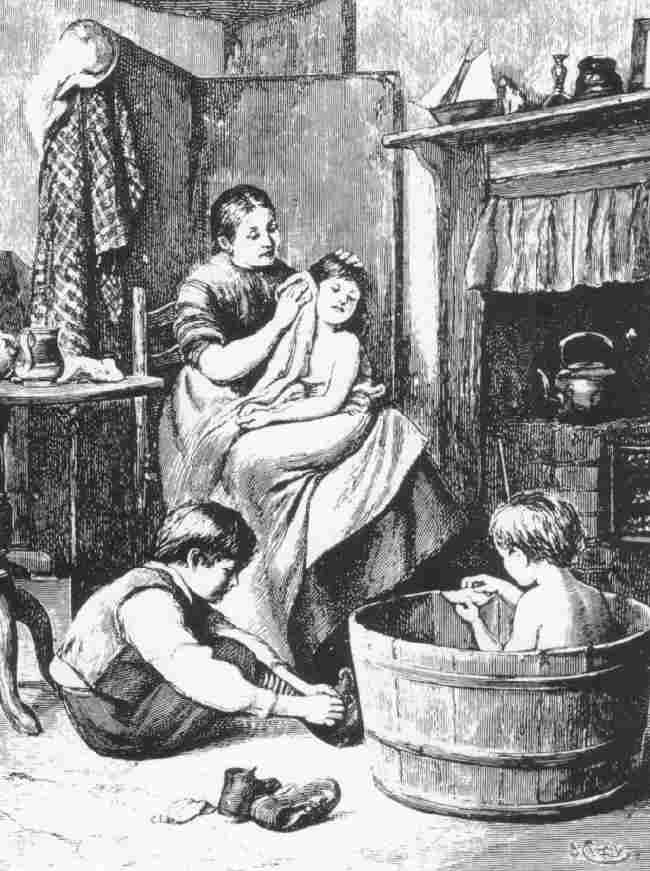
The Home: Bathrooms

Figure 1.--Relatively few private homes had bathrooms in the 19th century. Gradually the bath became a weekly event, even without a bathroom. Wood barrels were used at first. Then galvanized tubs became common. You can see them advertized in the early Sears and Wards catalogs. We are not sure who did the drawing here, perhaps Brenda Prince. Nor do we know where it was first published. From the clothing a wood barrel we would guess it depicts a scene in the mid-19th century. Mother and the older boy would have to carry the water from a nearby pump. Farmrs would have a pump by the houuse. Town would have had pumps or fountains located throughout the city. The boys would be bathed in the living room or kitchen. Not the kettle which was used to het the water.
|
The history of the bathroom is perhaps the most interesting of any room in the home. The story begins in ancient time. Romand were great managers of water and in fact the very word "plumbing" is derived from the Latin word for lead--"plumbum". And until very recently pipes were made from lead. Plumbing is the key to the bathroom. Plumbing is the tubeing needed to move water. Aflluent Romans had bathrooms in the sence of toilets, but only the very wealthy had bathrooms in the sence of bathing. Here the Romans used municiplal baths which had hot water and were an important way of socializing. After the fall of Rome, bathrooms and toilets disappared from the individual family home. Actually bthing itself not only virtually disappeared and came to be seen as unhealtful. Incredably it took 1 1/2 milleania for the bathroom to reappear in the fa,ily home. Here both technological advances as well as the wealth created by the Indistrial Revolution brought the bathroom back inside the home. We first see bathrooms in the Victorian Era, esecially in the late 19th century. The first bath rooms appeared in wealthy homes. Only gradually did the working-class acquire them. As late as World war II many working-class families in Britain and Europe did not have indoor pluming and bathrooms. One ngative aspect of bathrooms and improved sanitation was the dreadful outbreak of Polio epidemics among children.
HBC

Navigate the Boys' Historical Clothing Web Site:
[Return to the Main home room page]
[Return to the Main home page]
[Introduction]
[Activities]
[Biographies]
[Chronology]
[Clothing styles]
[Countries]
[Photography]
[Bibliographies]
[Contributions]
[FAQs]
[Glossaries]
[Satellite sites]
[Tools]
[Boys' Clothing Home]
Created: 12:56 PM 10/20/2006
Last updated: 12:56 PM 10/20/2006



